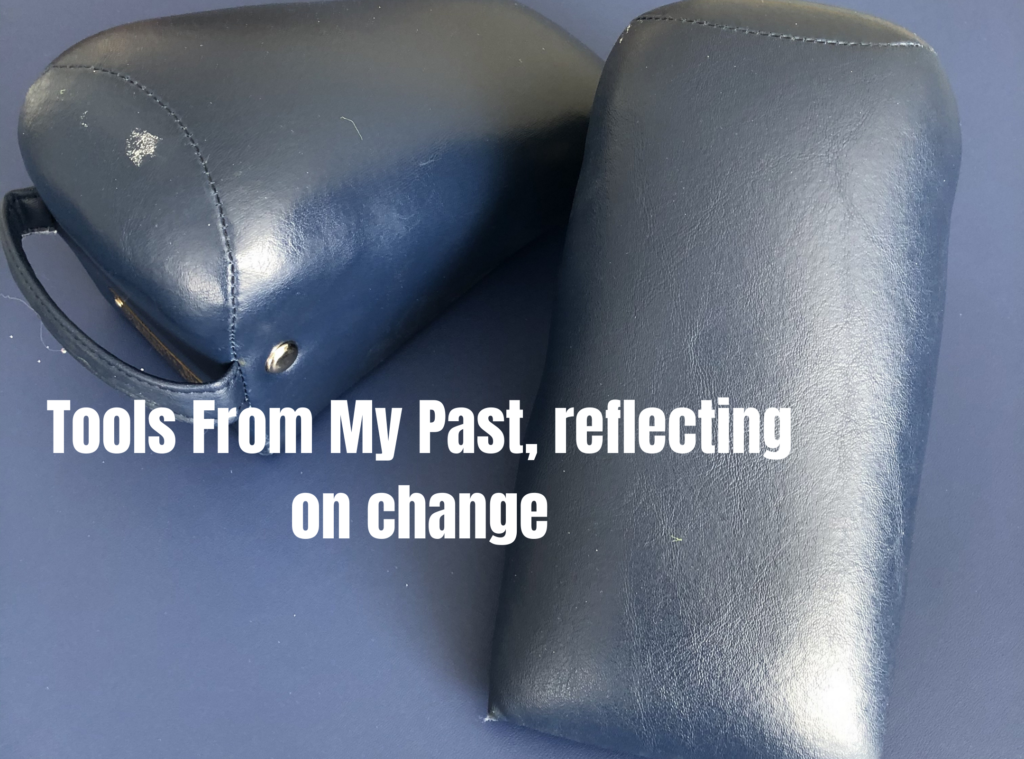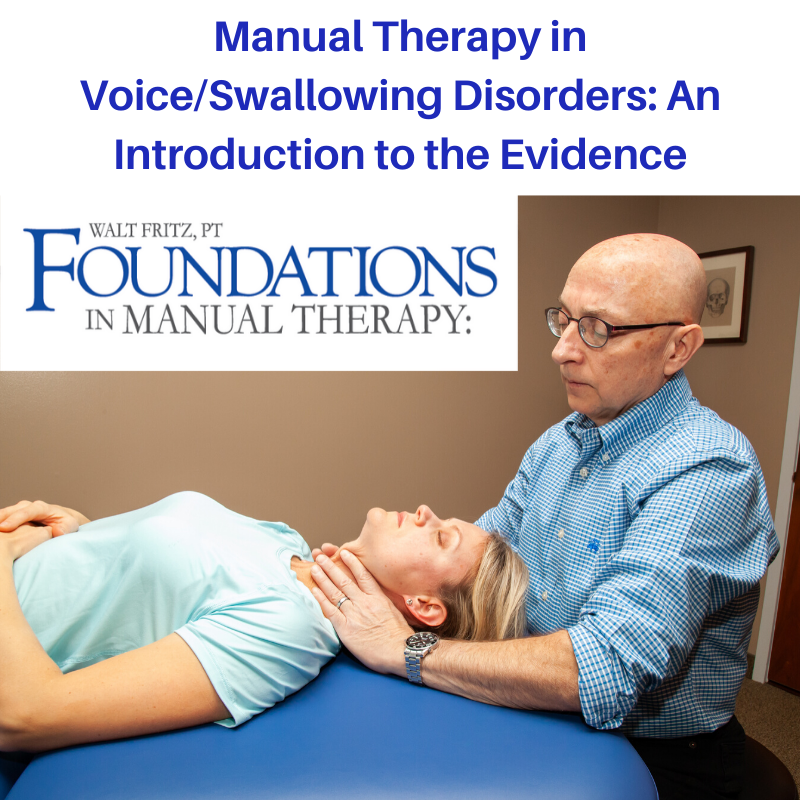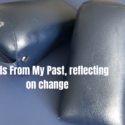
Tools from my past, reflecting on change.
by Walt Fritz, PT
Recognize those objects in the photo? They are pelvic wedges, used by some health professionals for a variety of reasons. Most rationales center around their use to balance the asymmetrical pelvis. I learned why and how to use them in a myofascial release (MFR) course on the pelvis, somewhere around 1994. The theory was that pelvic asymmetry, or torsions, were due to injury, birth trauma, and other nefarious insults and needed to be corrected for the pain to lessen, gait, and posture to improve, and many more reasons. I learned a lot in that class, much of it I used for many years. Those pelvic wedges are well-worn, as I balanced the hell out of many pelvises over a long time. And you want to know something? I helped a lot of patients with their back and related pain through the use of those wedges.
Then around 7-8 years ago I noticed that I was using them less often. In the present, they tend to stay unused. Why is that? Don’t I want to help people as I did in the past?
7-8 years ago is when I seriously began questioning all things therapy-related, both from a manual therapy perspective, but also from an exercise/strengthening perspective. I had departed my MFR world in 2006 after being told to conform or leave. (I chose to leave.) But I stuck with those MFR principles and philosophies for a number of years and applied them in my work, including what I thought was balancing the pelvis. After a few years I began drifting into other worlds; into other ways to describe and define the effects of manual therapy in general, and MFR in specific. At first, I didn’t like what I read and learned, as there was a lot of confusion and uncertainty over just how manual therapy impacts the human being. As I learned more, I saw the flaws in many of the simplistic explanations therapists use, as well as how the public views and repeats those simple concepts. Exercise, for instance, is often quite helpful, though I now know that those effects had little (if anything) to do with being weak. The common simplistic statement physical therapists tell their patients that being stronger will help you support yourself better, which leads to less pain was simply false. Or, the statement was so weakly true that it made little sense even to say it. However, patients say things like that all of the time. It was much of what the core stability craze grew from. “Getting strong” is helpful, but the strength itself is not what diminishes pain. It is a complex combination of factors that vary from person to person. Movement is helpful. Motion is lotion.
MFR, and manual therapy in general, suffer from similar simplistic errors. When one reads through some of the latest evidence (Bialosky, 2009, 2010, 2018; Geri, 2019; Kolb, 2020), these papers read very differently from the way I learned MFR. But I can wager that if you underwent advanced training in any of the popular branded modalities in manual therapy, the science that you learned may not align completely with what others see as truth. How do you put all of that together?
Let’s go back to my wedges. As an MFR-based PT, I saw people coming to me for issues of pain in the low back, peels, hip, sacroiliac joint (SIJ, and more. Often, one of the first places I began my evaluation was at their pelvis. “If you don’t balance the pelvis, nothing will stick” was a familiar phrase I was taught in my MFR of training. Along with postural assessment, a pelvic assessment was key to knowing what was at fault and what needed doing (on my part). Pelvis assessment was done by palpating both the ASISs and PSISs (front and back landmarks on either side of the pelvis), as well as looking at possible upslip/downslip of the pelvis, etc. There were some SIJ assessments, to see if one side was stuck, as well as other assessment procedures, mainly postural. After all of this, I would put it all together and tell my patient why they were having pain (what I thought to be the cause) and what needed to be done to correct things. Many times patients simply agreed to what I said was wrong and trusted me to fix them.
That’s when the wedges came in.
I’d place the wedges in precise locations so that when my patient rested on them, with the assistance from my MFR intervention, their pelvis was released back into a better alignment. We might repeat this over the course of a few sessions and I would reach them homework to reinforce the pelvis corrections. And most got better.
Wedges are used by other professions and by other modalities, so we MFR therapists didn’t own the patent. But the way we used them was said to be unique. Other clinicians wasted their time with ineffectual chiropractic adjustments, etc., but none of them had the long-lasting effects as we did. (I spoke like that a lot back then.
So why did I stop using them? Why would I stop using them?
In today’s culture on social media, evidence and research seem to have taken a turn for the dark places. Many mistrust research, feeling like scientists are always changing their minds and claiming all research is bought and paid for by big industries, etc. Science does self-correct continually, but that is the nature of the scientific method. During the period when I left my MFR tribe, I began reading studies, many of which seem to refute what I had been taught and what I had witnessed as a clinician. For instance, in 1999 Levangie (link) looked at the relationship between pelvis asymmetry and low back pain. While they found a weak association between the asymmetry of the PSISs and lower back pain, overall, “Pelvic asymmetry was not positively associated with low back pain in any way that seemed clinically meaningful.” One study does not make a believer out of many, and rightly so. But the more I dove down this and related research rabbit holes, the greater dissonance I found with what I learned and practiced. While I could go on for quite a while on the weakness of the link, suffice to say there is sufficient evidence that made me question just what it was that I WAS doing. The use of the wedges seemed to correlate in some way to my patient’s lower back pain resolution, but apparently, if I was to believe that dastardly evidence, it wasn’t because I reduced the asymmetry. (And for those of you who fancy yourself as a skilled assessor of pelvic levels, check out this systematic review of the reliability of palpating the PSISs. “Current methods of palpating for PSIS asymmetry do not result in levels of interexaminer reliability supporting clinical utility” (Cooperstein, 2019). Fake news, you say??? Try again. Another study points to the difficulty in accurately assessing pelvic tilts and ASIS/PSIS level due to inherent pelvic variations in pelvic morphology that render each side of the pelvis different from the other side. WE cannot measure what we think we are measuring when the underlying structure is not arranges as we think it is! Link
So what could it have been?
First off, I am not in any way calling anyone who used wedges ineffectual. Not in the least. But what I am suggesting is that the process of using of wedges with a patient, from introducing the concept that pelvic misalignment may have a good deal to do with pain, to the rituals involved with the measurement of their posture and pelvis symmetry, to the rituals involved both with the precision of wedge placement as well as the exactness in which I proceeded with treatment, is a part of contextual factors that often go underappreciated. Add in neurological input through the patient’s skin/soft tissue which can signal to higher centers that things are happening, leaving the patient able to participate in the process of change (read those initial references I gave you for more on these concepts), as well as potential local reactions from the body, and often the pain is lessened. Does the pelvis change in a meaningful and lasting way? Many insist that it does and they claim to have proof. Maybe they do, but even if the pelvic alignment changes, how can we be certain of the cause? Meaning, was it the wedges? Our input over their skin/tissues, while on the wedges? The nervous system adapting over time to a novel stimulus? Or a wide range of other variables?
Those of you who use and swear by wedge usage, postural deviations as the cause of pain, and other similar narratives, there is a very strong chance you’ve already given up on this story, as there is too much cognitive dissonance occurring for you to remain. However, as I learned more about how neurological and behavioral influences impact pain and movement quality, I saw that the wedges were simply a tool to access that entire human in front of me. I learned that I could use simpler tools to accomplish the same end, namely conversation and assuring a richly contextual therapeutic relationship, one that my patient played a larger role in creating. I continue to use manual therapy (I dropped the MFR brand), though coupled with strong suggestions for movement (exercise, strengthening, walking, dancing, etc.) as a means to get them moving. Do I get better results than I did back in my MFR wedging days? That is difficult to accurately and objectively say, as such data is difficult to analyze. My patients seem satisfied, as are the insurance companies that often pay the bill.
Why don’t I use them anymore? That I cannot completely answer, as I still see them as potentially useful. If other means did not seem to spark the attention of a patient then I may drag them out and put them into action. Should you stop using your wedges? Nope. Just realize, the wedges may have less important that you and I were led to believe. I can tell you in full honesty that it has been many years since I performed a standing postural assessment, pelvic measuring included. It has been that long since I pinned my patient’s pain on their pelvis being out of alignment.
Much of our training is about learning recipes and rituals. We take more training as we believe it will give us more skills, which it might. But additional training allows the educator additional access to your brain, filling it with the jargon and recipes of your modality. By using those recipes you set up a context that seems precise, but in the end, maybe no more helpful than that provided by the next person. I do find irony in the position put out by some modalities, educators, and clinicians who feel that they use no protocols or recipes; every patient is a unique experience. While that should be true, such clinical models often rely on recipes and rituals, such as “find the pain, look elsewhere for the cause (recipe), if you don’t balance the pelvis, nothing will hold (ritual), and many others.
Many argue against what I’ve said thus far by pointing to their experience and successes. Who can argue with all of those satisfied customers? No one, but what I will take issue with what you feel the reason you were able to help. Many modality educators make money off of the uniqueness of their product and love to inflate their outcomes and sense of importance. Surprised? Probably not, after all, one needs a good sales pitch in this world. But why is it that most of use take multiple lines of training and come up with our own unique hybrid approach? We are not following the rules and recipes of each of our mentors, rather, we are making that information our own. That’s life. Wedges are not magic. They are a part of a recipe, one I let go of and still manage to find ways to help my patients, probably just as much as any of you.
Another problem with rituals that involve my so-called skills is the dependency that this can create. If I pin my patient’s pain on their out-of-balance pelvis, restricted fascia, stuck SIJ, or any other tissue or structural-based problem, dependency may be fostered. It is very easy for a patient to sell themselves on needing us, now and if the pain returns, instead of educating them on strategies for them to take ownership. Many manual therapists do foster such independence through self-treatment education, which is better in keeping with what should be ethical standards of care. But how do you come across? Are you selling secret causation to patients? One that no one else knows the truth?
The moral of this story? Use wedges. Or don’t use wedges. Just understand that the experience of treatment is nuanced and multifactorial. Many factors go into why our patient improves, many more than I am listing here, that to reduce it as being caused by the use of wedges, or the use of MFR, or anything else you can think of. Including the things I think are important.
If you enjoyed some of the concepts presented here, or if they left you angry and frustrated, have a listen to a great podcast (not mine!). Dr. Oliver Thomson’s Words Matter podcast is a dive into evidence and approaches to manual therapy, exercise, and a better understanding of the words we use.
Happy wedging. Or not.
Walt Fritz, PT
Foundations in Manual Therapy Seminars and The Pain Relief Center
Please consider checking out my online course offering, which will be expanding over the next few months, including a full hands-on online course. You can find the information here. Also, read up on my in-person seminars at the links in the menu on this page.



Sorry, comments are closed for this post.